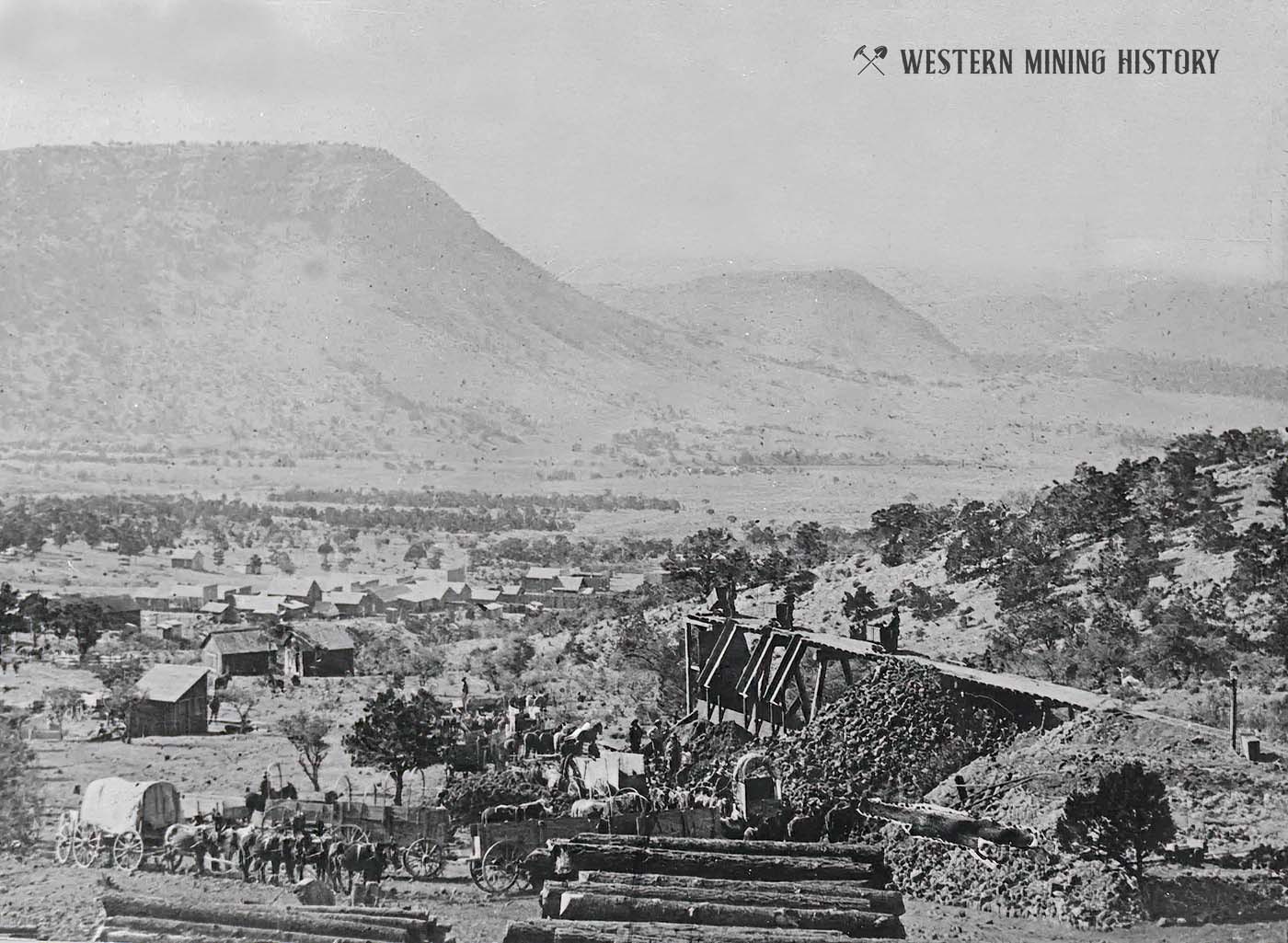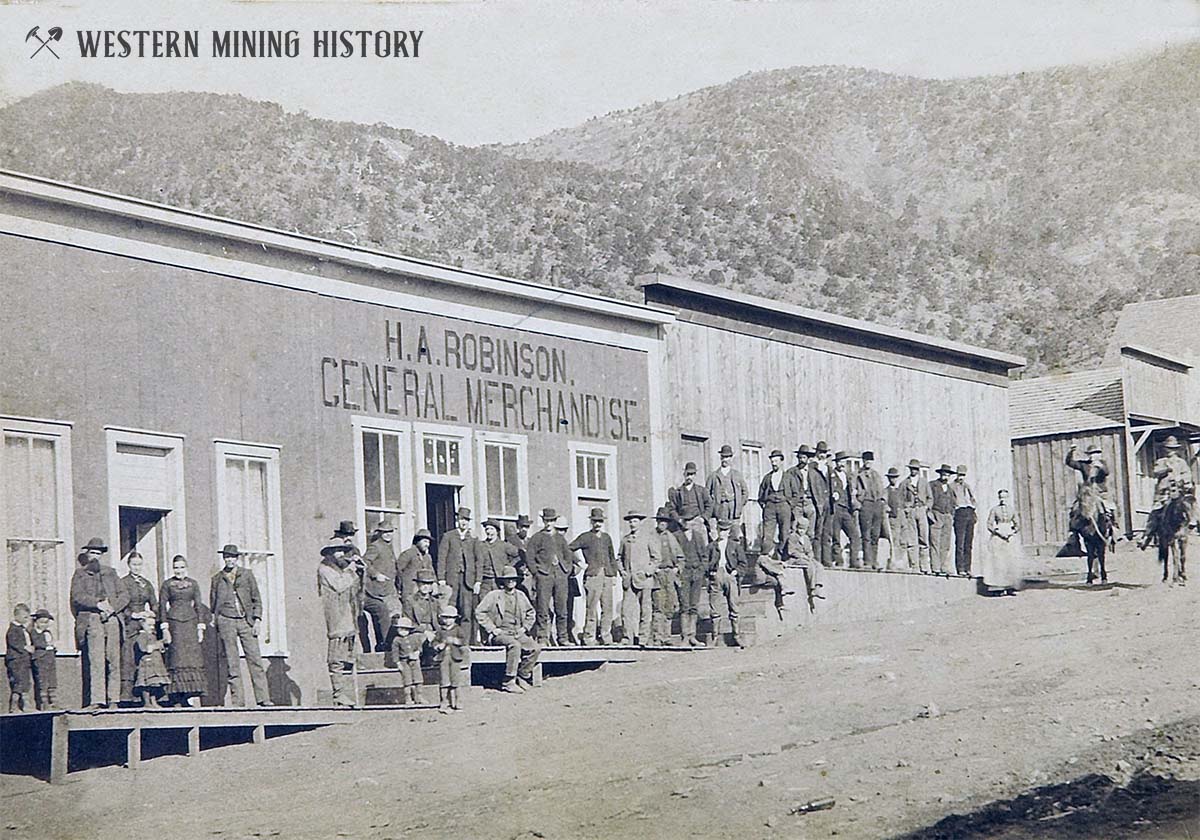Kelly History
Kelly had a post office 1883-1945. The text in this section is from a historical marker at the Kelly town site.
The town of Kelly New Mexico, which thrived here, was more than a mining boomtown.... it was home to it's thousands of citizens. The mining operations sent huge shipments of lead, zinc, and silver ores to smelters, which helped build America during the industrial westward expansion. These great shipments made Kelly the foremost mine in New Mexico's 19th century past.
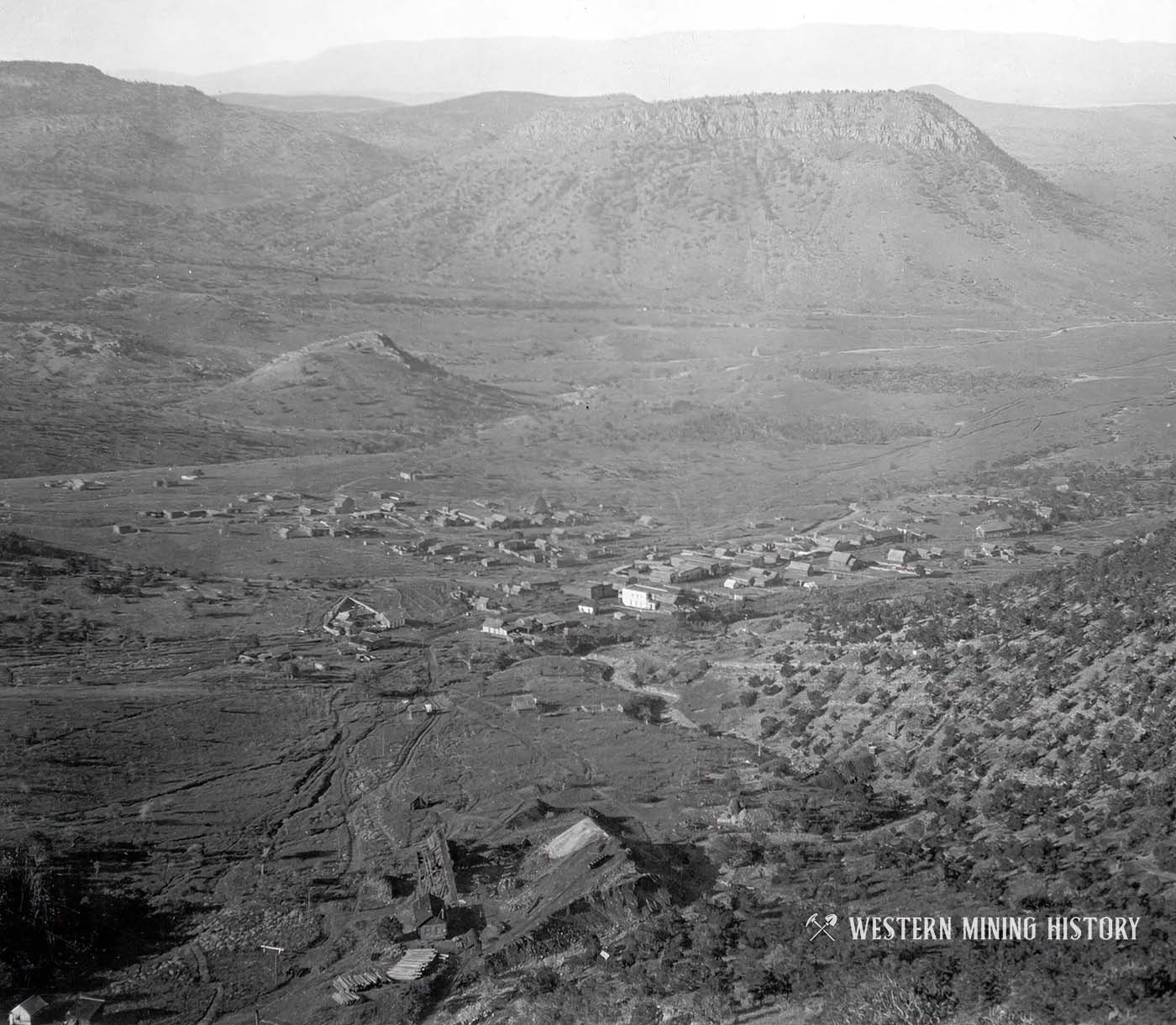
John S. Hutchason arrived here in 1866 after serving in the Civil War to prospect this area at the invitation of his partner Pete Kinisinger. The early town on this site as called "Middle Camp", and formed a hub for the Graphic, Waldo, Juanita, and Kelly Mines.
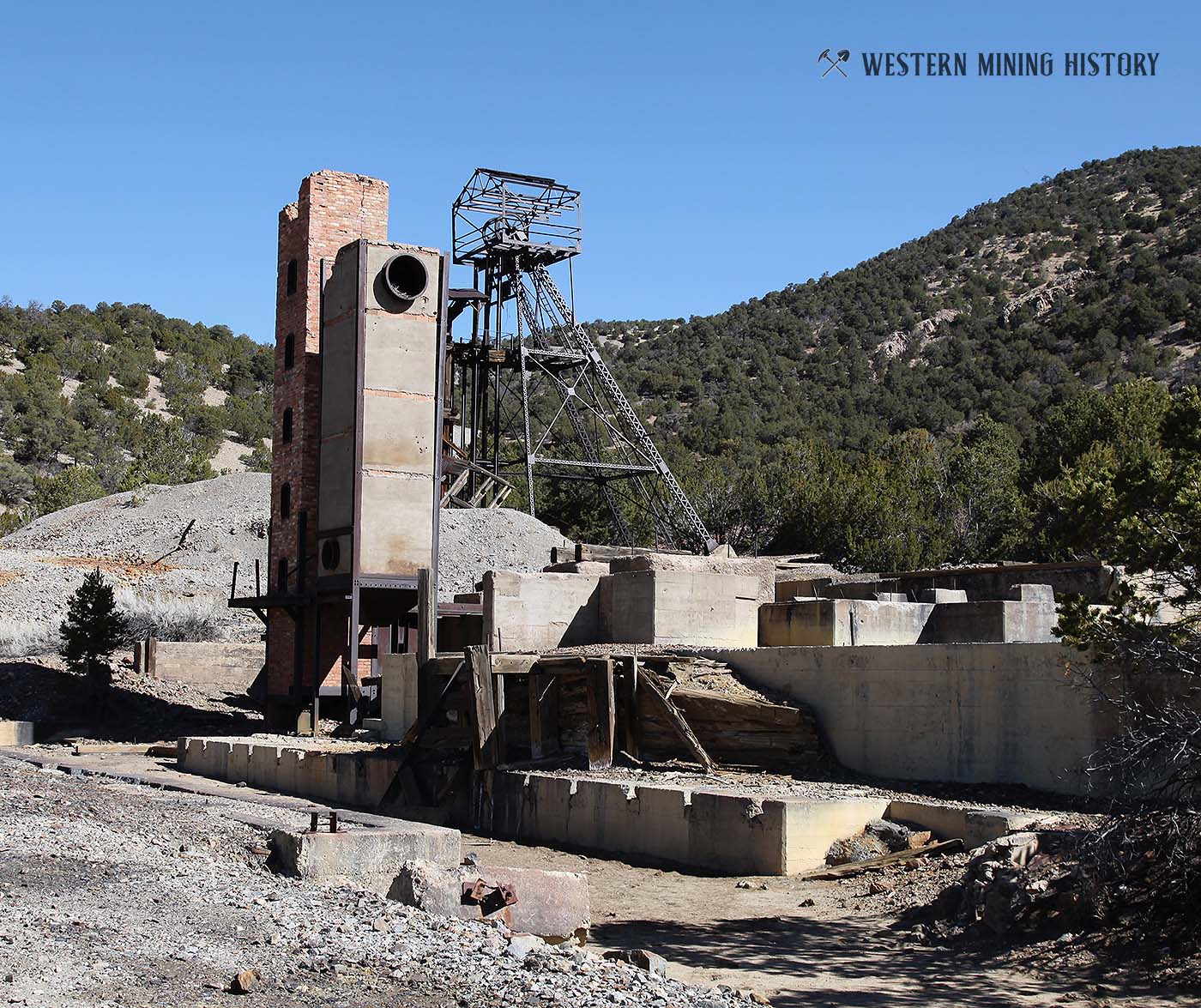
The name Kelly came from Patrick H. Kelley who held a few of the claims. By 1884, Kelly Township was established with banks, churches, saloons, a clinic, and several mercantile stores, while Magdalena was established 3 miles north as the AT & SF Railway terminus to haul away the precious ores from these mines.
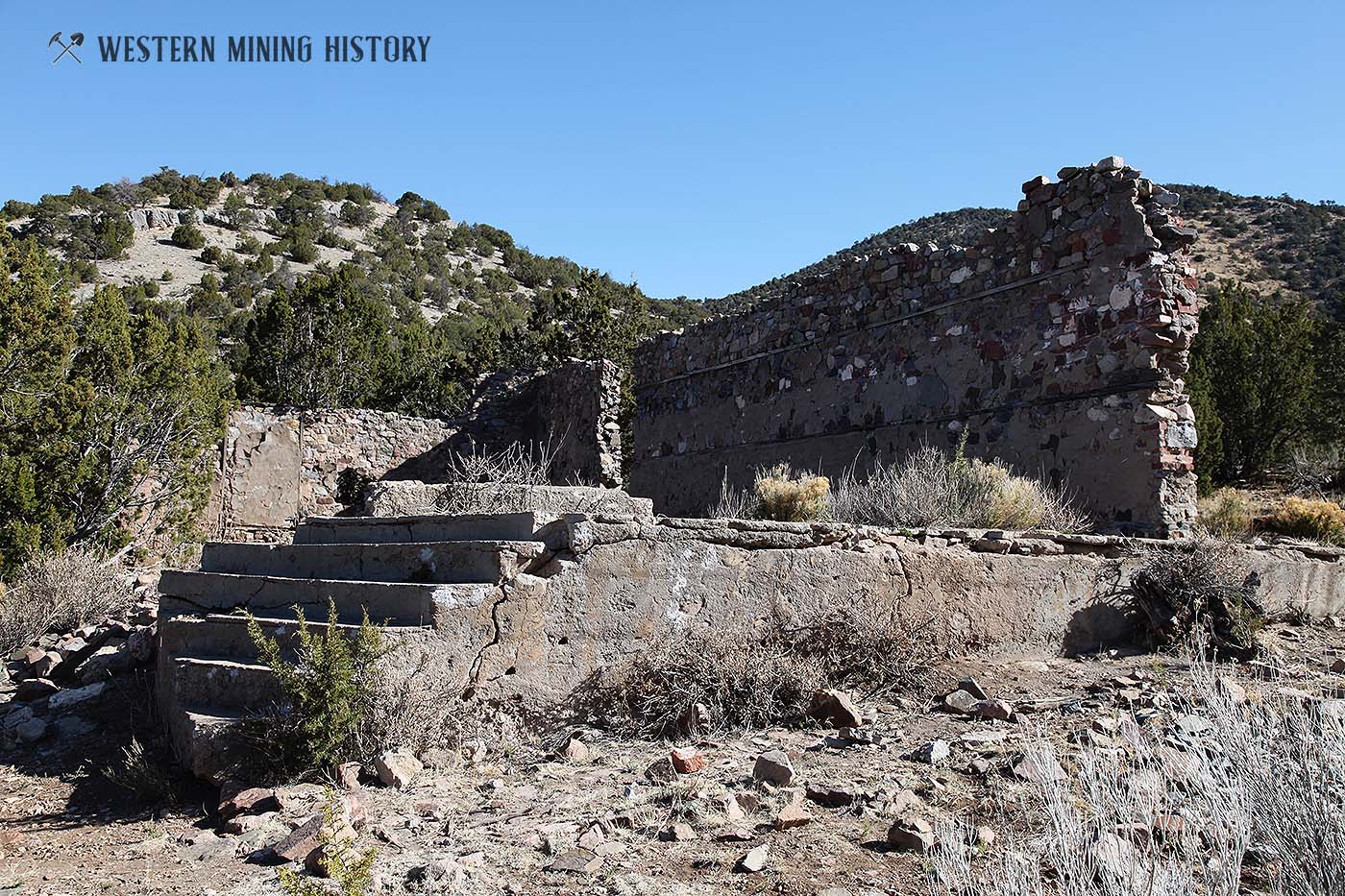
The last residents of Kelly departed in 1947, and most of their homes were painstakingly hauled down to Magdalena.
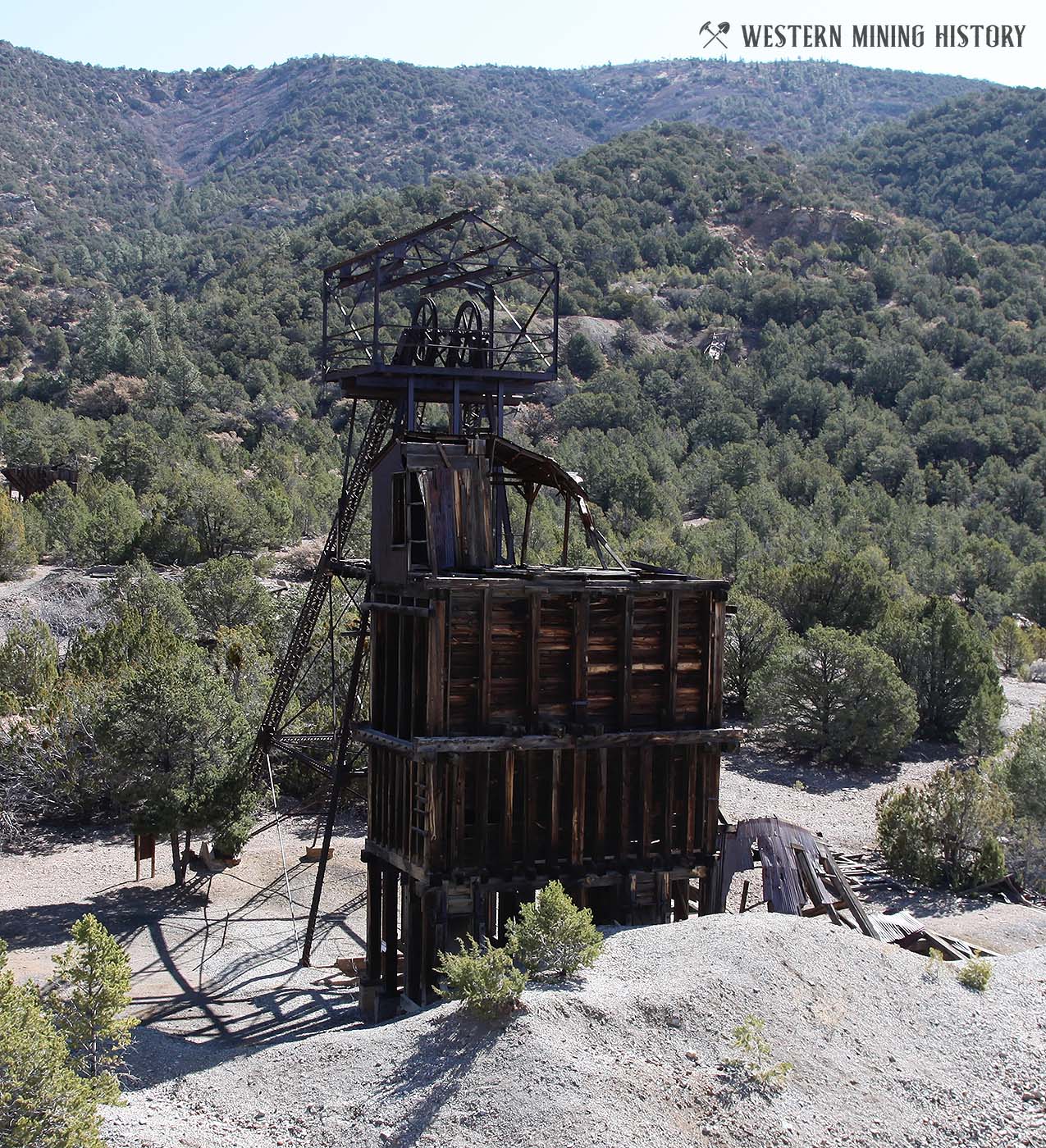
The Kelly Mine headframe still proudly stands today as the sentinel of New Mexico's famous mining heritage. This headframe was erected in 1906 by Gustav Billing owner, being purchased from the Traylor Engineering Company of New York, which acquired this headframe in kit form from the Carnegie Steel Works of Passaic New Jersey after it was designed by Alexander G. Eiffel to be the state-of-the-art technology of that era.

It stands today as a lasting monument to the men who toiled and sacrificed their brave lives for the prosperity of an emerging nation, towering 121 feet over the Tri-Bullion Shaft which drops nearly 1,000 feet down into a maze of over 30 miles of tunnels, all now closed, silent as the grave.
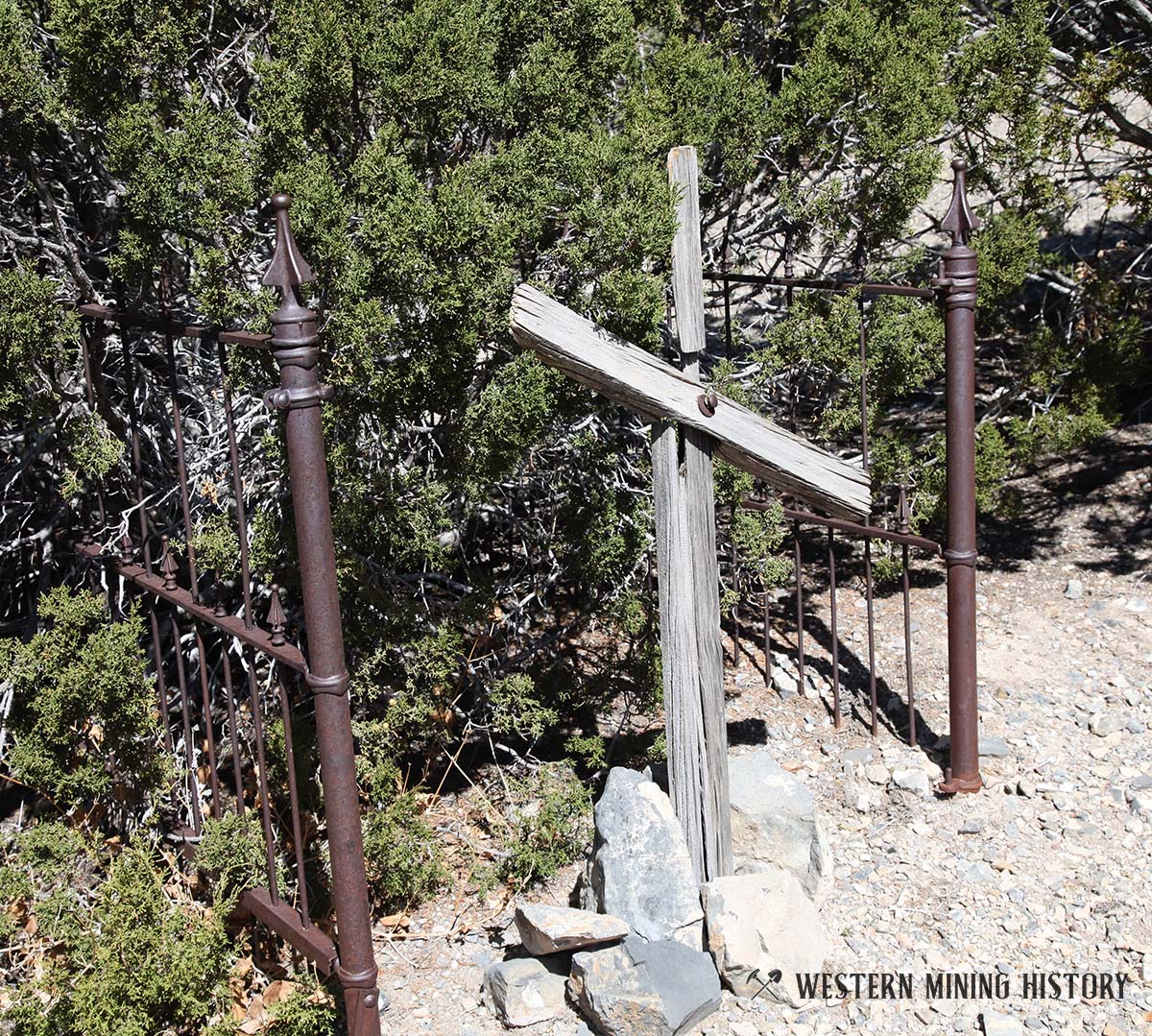
Mob Violence at Middle Camp 1883
An incident in March of 1883 highlights the general lawlessness of early mining camps, and the dangers of anti-Chinese sentiment during the time. Mr. Huber, Superintendent of the Kelly Mine, brought a Chinese man to Middle Camp to work as his assistant. Miners in the area strongly opposed the introduction of Chinese to the area, fearing that they would lose their jobs.
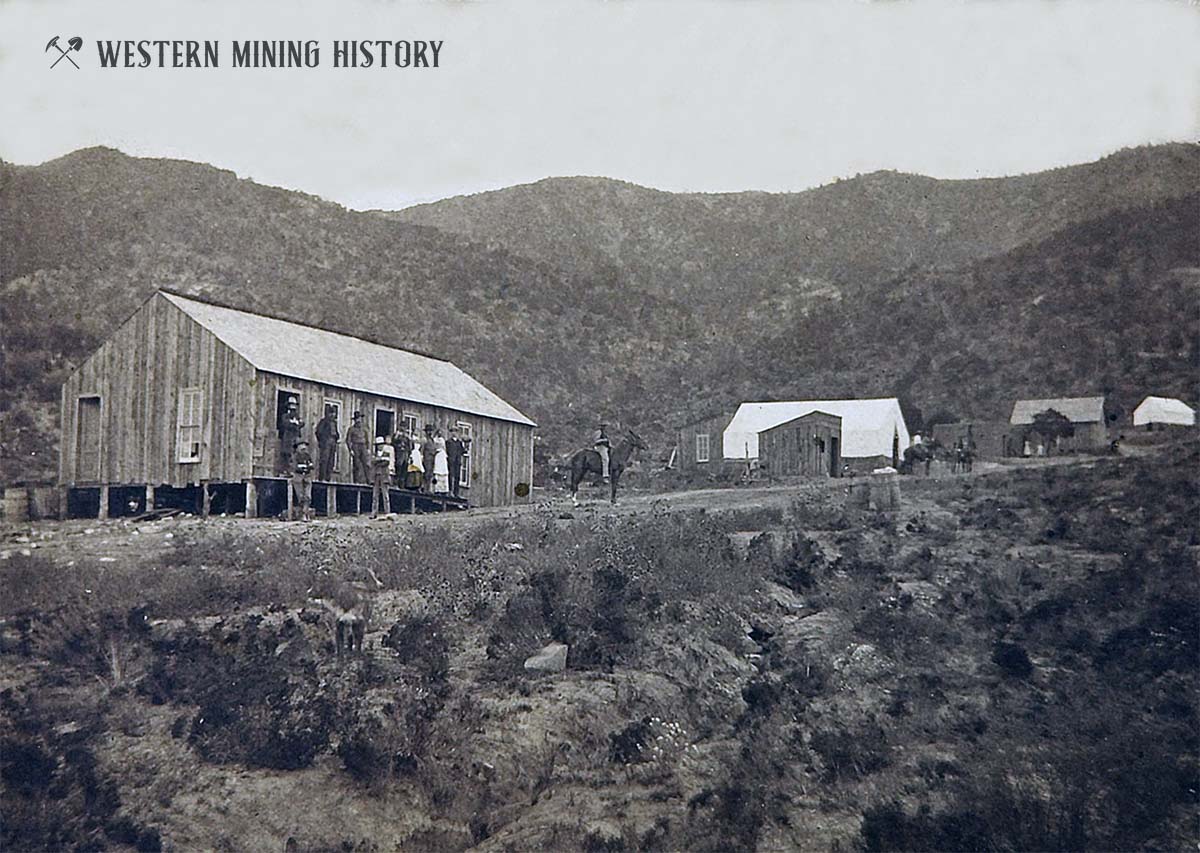
Although Mr. Huber assured the miners that no Chinese would be working in the mine, a large group of drunken men marched on the Superintendents home. A newspaper reported on what happened next:
Just after dark on Saturday night, twenty-five or thirty armed men, well fortified with whisky, proceeded in a crowd to Mr. Huber's house, which is situated on the mountain, a short distance above the camp, and near the shaft of the Kelly mine. Four Americans, employed by Supt. Huber, learning of what was up, armed themselves and awaited the approach of the rioters outside of the house No one knew where the Chinaman was at that time
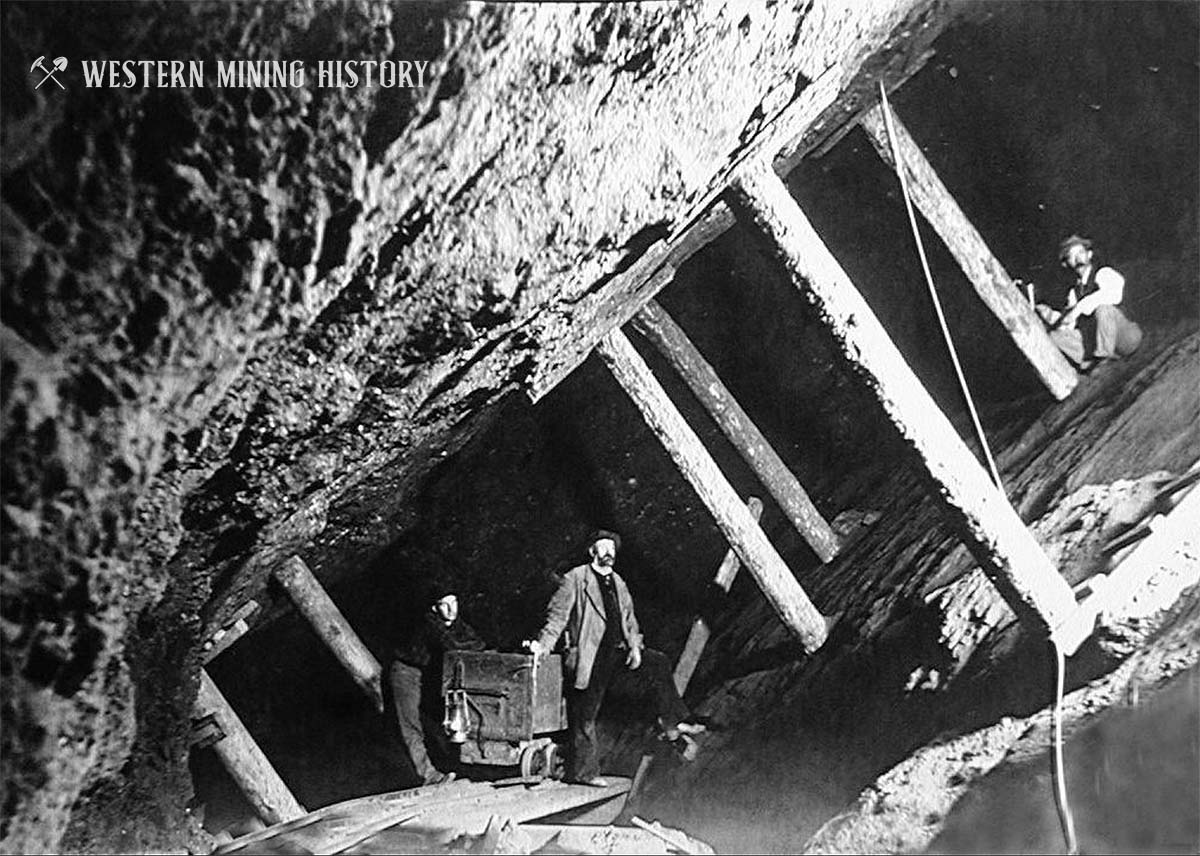
On the approach of the men the four guardians of Mr. Huber's property were told to throw up their hands. They attempted to parley with the drunken crowd, but for answer to their request to talk the matter over, they received a shot, and immediately an indiscriminate firing on both sides began. Fully one hundred and fifty shots were exchanged, when the would-be murderers broke and retreated pell-mell down the mountain--leaving one of their number, a reckless character known as Socorro Jim, but whose real name was James Henney, lying dead near the house.
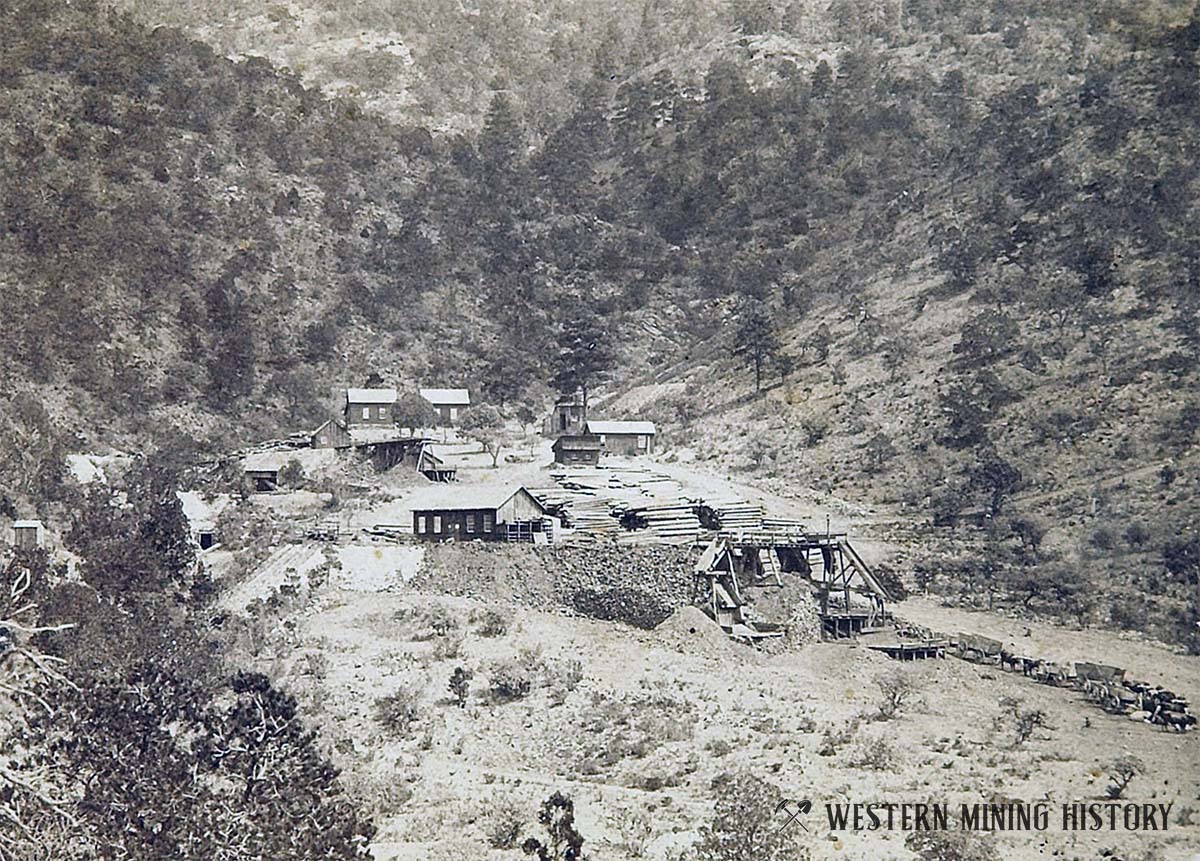
As soon as the firing was heard down in Middle Camp, Joe Eaton and Mr. Wanless immediately repaired to the scene of trouble, but the mob retreated as the gentlemen reached the house. Socorro Jim was found dead lying on his face, shot through the neck. An inquest was held over the remains and a verdict in accordance with the above facts rendered. The funeral took place on Sunday morning.
The Chinaman, the innocent cause of disturbance, escaped without a scratch, having sought the deepest cavern of the Kelly mine.
No arrests have as yet been made, but further developments, and perhaps a still more serious affair may be expected, as there is considerable bad blood in the camp.
